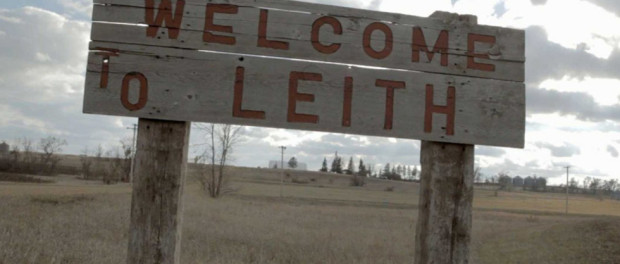Welcome to Leith: The Racist Next Door
What would you do if one of the most notorious racists in the country moved in next door? That’s the question folks in the small town of Leith, North Dakota were forced to deal with in 2012. The documentary Welcome to Leith explores the consequences faced by members of this tiny community when well-known racist Craig Cobb takes up residence in their normally quiet town with plans to buy up land and establishing a white nationalist centre. Directed and written by Michael Beach Nichols and Christopher K. Walker, the film presents a gripping and insightful glimpse into the reality of racism (as well as the fight against it) which is currently taking place in the U.S.
Towns don’t get much smaller than the rural community of Leith; consisting of 24 residents spread over three square miles. This unassuming milieu is reluctantly thrown into the international spotlight when outspoken racist Craig Cobb moves into town. His presence pits local residents against the interloping militant white supremacist members bent on procuring racial “purity” and protecting the white race.
Welcome to Leith isn’t didactic or preachy when it comes to presenting its controversial subject matter. Instead, the filmmakers simply present the facts and allow viewers to reach their own conclusions. The documentary also manages to cleverly balance its depiction of Cobb’s career as a well-known racist with the relatively innocent mindset of Leith’s rural population. The town seems to be the kind of place where time has stood still. Everyone knows their neighbour and the problems of the outside world are largely held at bay. Early on in the documentary one of the community leaders even admits that he didn’t know what a white supremacist was before Cobb took up residence in the local community.
One of the greatest strengths of Welcome To Leith is that it allows each individual depicted in the film to speak for him or herself. Cobb isn’t portrayed as simply “the villian” but rather viewers are given the opportunity to judge him by his words and actions. The documentary features an array of news footage chronicling Cobb’s racist propaganda and his efforts to “protect and promote” the white race. In an ironic moment during a heated confrontation with a Leith resident Cobb actually boasts about his position as one of the country’s top ten racists when he proclaims loudly, “I’m one of the most famous racists in the world.”
The documentary succeeds at depicting a chilling glimpse into the dangerous beliefs of white supremacist, neo Nazi, and so called exterminationist groups currently operating in the U.S. It’s equally disconcerting to see how Cobb and his followers aim to use the freedom and democracy afforded to them by the American government against the citizens of Leith. Cobb wants to buy up much of the land in Leith so that he and his racist followers will make up the majority of the small town’s population and thus be able to take control of it.
With all the hatred depicted in Welcome to Leith the film also presents viewers with a great deal of hope. It serves to offer some encouragement that even in a climate in which racism and hatred are ever-present, good people will come forward and fight for freedom and equal rights. After Cobb’s intentions are discovered, the residents of the tiny community pull together in order to fight against their common enemy. This support among neighbours is contrasted with Cobb’s predicament once things begin to go awry. Apparently in his case, however, when the going gets tough (legally at least), his racist followers opt to simply run for cover.
Welcome to Leith is an effective and engrossing film about a clash of basic beliefs. It addresses issues such as freedom, equality, an “us versus them” mentality, the lingering effects of Hitler’s regime, and the fight for basic human rights.
Welcome to Leith screens at Cinéma Excentris on August 27th at 8pm as part of the Montreal International Documentary Festival.







